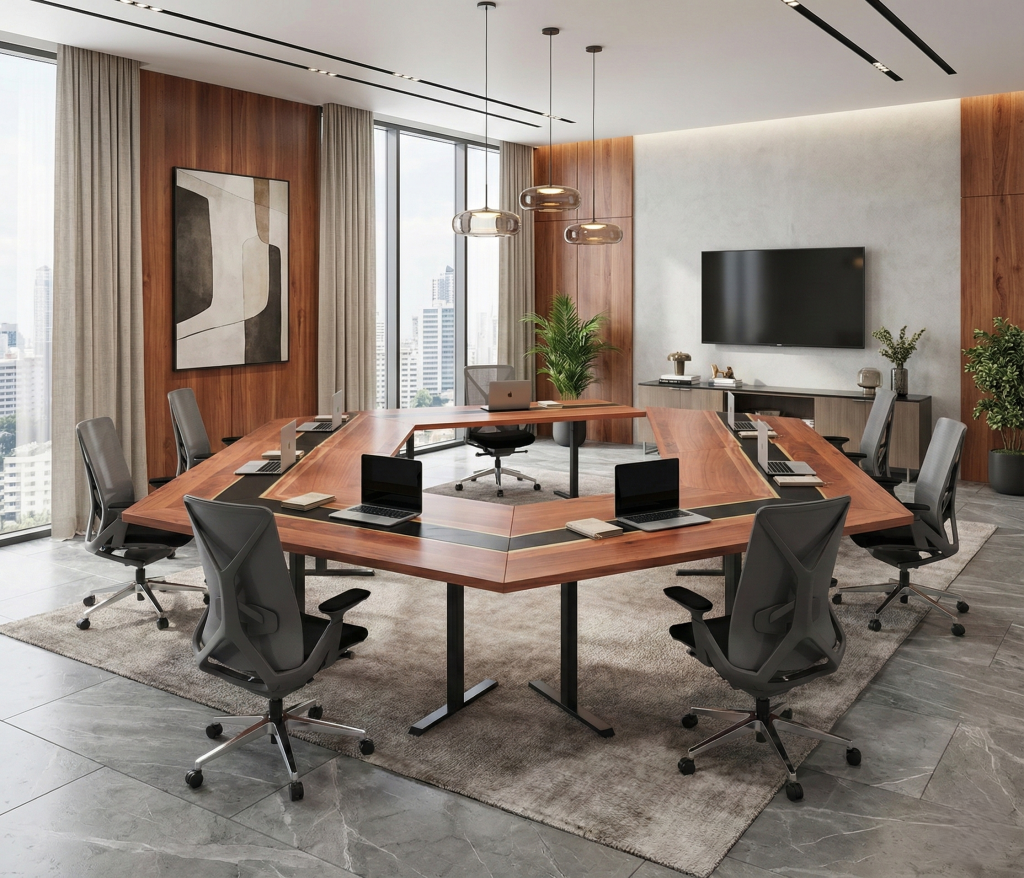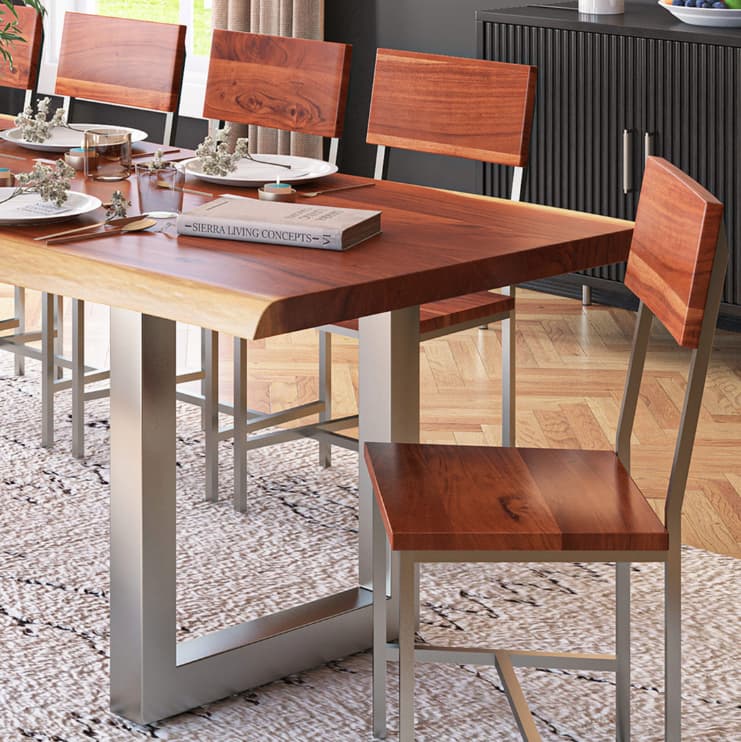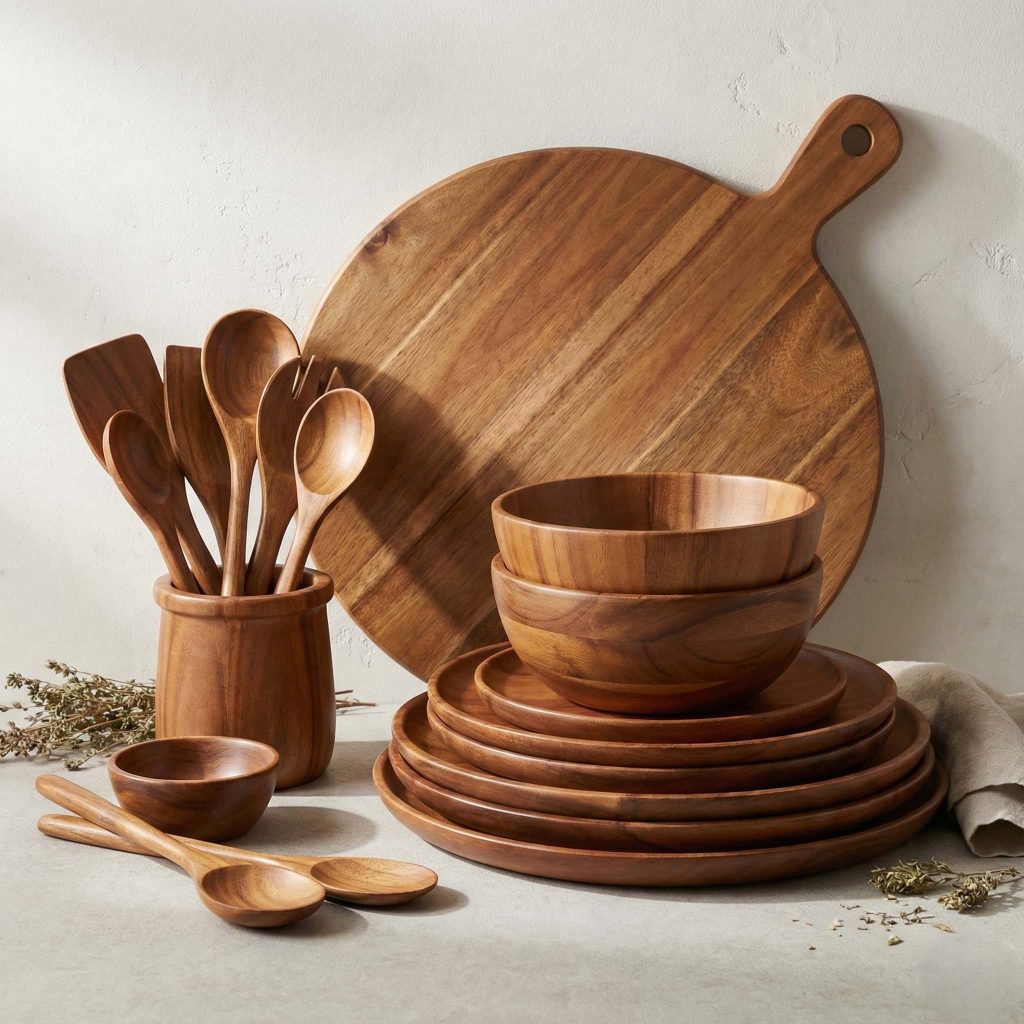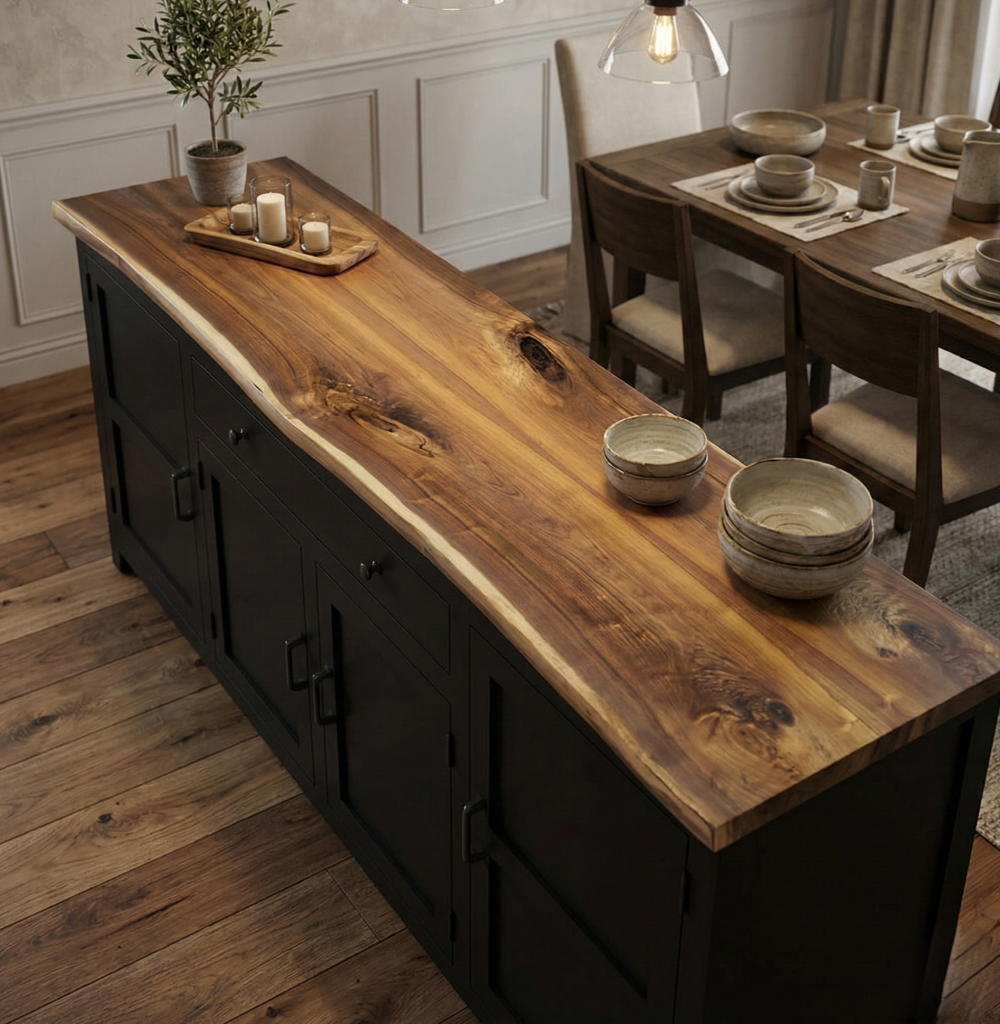
What is Acacia Wood? Everything You Need to Know Before Buying!
Acacia Wood: Is It Worth the Hype?
If you’ve been shopping for solid wood furniture lately—especially anything durable, stylish, and worth the price – you’ve probably noticed one name popping up everywhere: acacia wood. And honestly, there is a good reason for that. It is beautiful, dependable, and has this warm personality that just makes any room feel more put together.
But if you’re planning to bring home furniture that will stay with you for years, you probably want to know exactly what you’re investing in. So, let’s take a comfortable walk-through of what acacia wood is, why people love it, what to expect, and whether it truly deserves the hype it is getting.
What Is Acacia Wood?
It comes from the acacia tree, which grows quickly and is mostly found in Asia, Australia, and parts of Africa. Known for its remarkable diversity, this solid wood comes in over 1,300 species, giving it many forms and uses. From rustic farmhouse tables to sleek mid-century cabinets, it adapts beautifully to almost any style.
Its natural strength, durability, dense grain patterns, and resistance to water and pests make it highly valued for long-lasting furniture. No wonder homeowners are eyeing acacia wood dining tables, dressers, and even cutting boards more than ever.
Acacia Wood Characteristics: What Makes It Special?
1. Acacia Wood Hardness (Janka Rating)
Let’s understand hardness – because this is what tells you how tough the wood really is.
It has a Janka rating of 1,750–2,300 lbf, depending on the species. It’s harder than oak and nearly as tough as teak. In simple words? It withstands daily use like a champ.
If you prefer numbers:
- Acacia Wood Janka Rating: ~2,000 lbf
- Acacia Janka Wood Hardness: Very high compared to common hardwoods
That’s why acacia tables, flooring, and desks last for decades.
2. Durability & Strength
It is incredibly dense, making it ideal for high-use furniture pieces like:
- Dining tables
- Coffee tables
- Cabinets
- Nightstands
- Chairs
Many families choose acacia tree wood because it doesn’t dent easily and stays stable even with temperature fluctuations.
3. Appearance & Grain Patterns
If there is one thing that makes people fall in love instantly, it is the look.
It comes in rich tones like:
- Honey Gold
- Amber
- Medium Chestnut
- Deep Walnut
The unique wave-like grain patterns make every acacia wooden table, live-edge dining table, or acacia wood bowl feel like a one-of-a-kind art piece.
4. Water & Pest Resistance
Is acacia wood water-resistant?
Yes – naturally so.
This makes it suitable for:
- Bathroom vanities
- Kitchen countertops
- Outdoor furniture (with proper sealing)
Its natural oils also repel pests, which is a major win for long-lasting furniture.
5. Sustainability & Eco-Friendliness
Acacia grows extremely rapidly, making it a renewable and eco-friendly hardwood. Many species are harvested responsibly, which is why eco-conscious buyers prefer furniture made of acacia wood over slow-growing trees like teak or oak.

What Is Acacia Wood Used For? (Common Applications)
1. Acacia Wood Furniture
Acacia dominates modern homes – and honestly, it’s easy to see why.
Popular categories include:
- Acacia dining table & dining chairs
- Acacia dresser
- Acacia coffee table
- Acacia cabinet
- Acacia nightstand
- Acacia bed
These pieces are sturdy, stylish, and age beautifully.
2. Acacia Wood Flooring
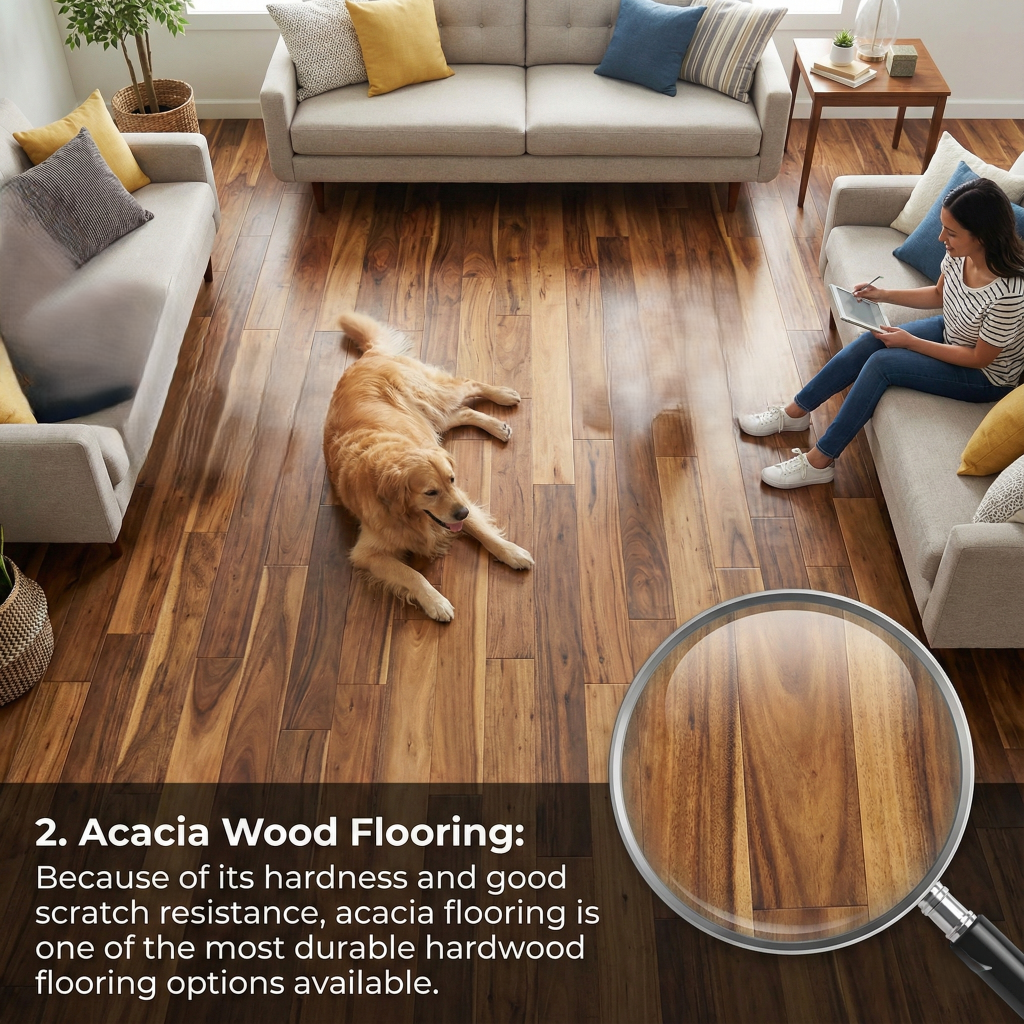
3. Kitchenware
If you’ve ever admired those gorgeous cutting boards on Pinterest—yep, many are acacia.
And yes, it’s good for cutting boards because it’s durable, water-resistant, and gentle on knives.
4. Countertops & Décor
From acacia wood countertops to decorative bowls and trays, the wood adds warmth to modern and rustic homes alike.
5. Historical & Niche Uses
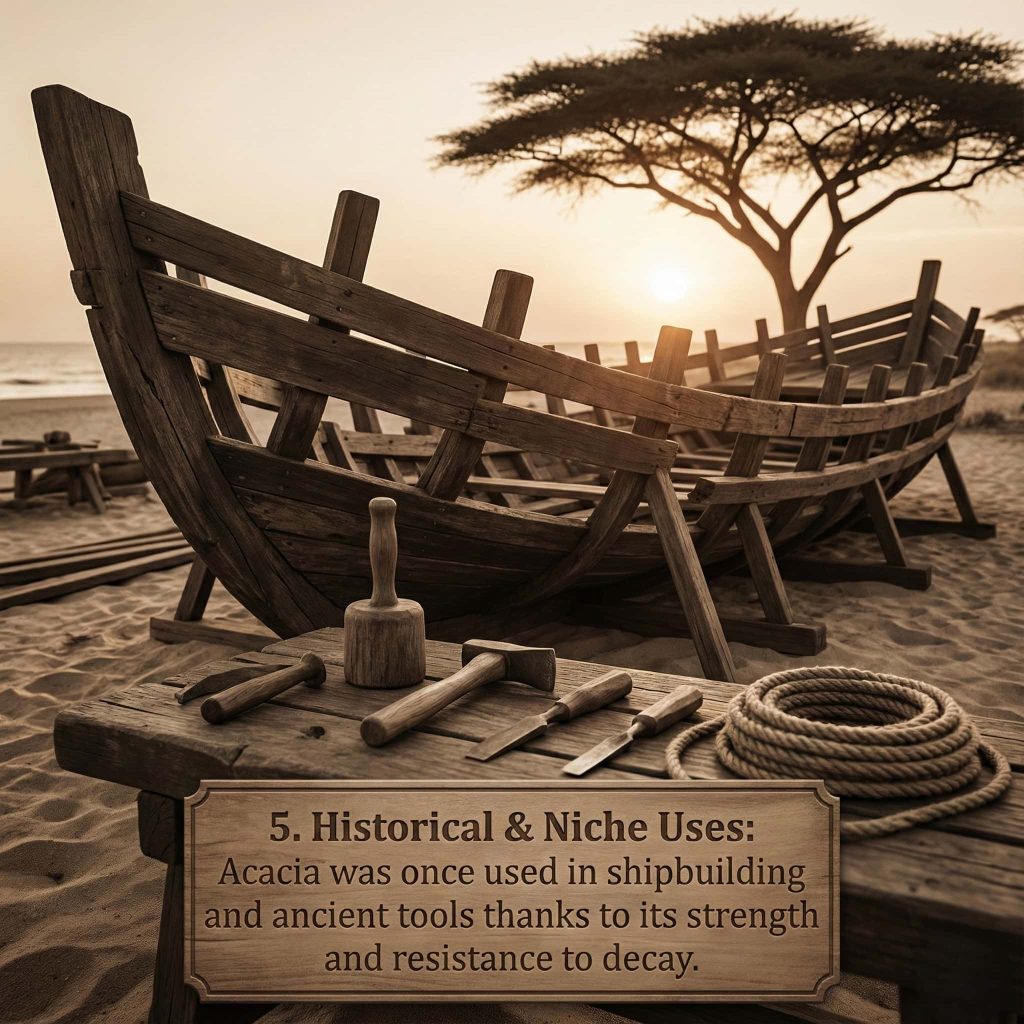
Key Advantages of Acacia Wood (Why Homeowners Love It)
Let’s quickly summarize what makes Acacia wood amazing:

It balances beauty and practicality, which is why designers and homeowners alike love using tables, chairs, flooring, and more made from this.
When budget considerations are paramount, this wood emerges as the superior choice.
Disadvantages of Acacia Wood (Important to Know)
Just to keep things honest:
- It can be more expensive than softer wood.
- Requires occasional oiling to maintain moisture balance.
- Lower-quality acacia species may warp if not seasoned properly.
- Sunlight can darken or lighten the wood over time.
None of these are deal-breakers, but it’s better to know before buying.
Is Acacia Wood Good for Outdoor Furniture?
Short answer: Yes—but with care.
For best performance, outdoor acacia wood should be:
- Properly kiln-dried
- Sealed with outdoor varnish or oil
- Protected from constant moisture
For decks, patios, and garden chairs, acacia performs beautifully – but like all woods, a little maintenance goes a long way.
Is Acacia Wood Expensive?
Acacia is less expensive than teak, walnut, or rosewood but more expensive than mango, rubberwood, or pine.
You get premium durability at a mid-range price – one reason it is so popular for acacia wooden tables, acacia wood cabinets, and bedroom furniture.
Acacia Wood vs Other Woods
Acacia vs Teak
- Teak: Ultimate outdoor king, naturally oily, more expensive
- Acacia: Affordable, harder in many cases, excellent for indoor furniture
If budget matters, acacia is the clear winner.
Acacia vs Oak
- Oak: Even grain, traditional look, slightly softer
- Acacia: Richer grain patterns, higher hardness, and a more unique, eye-catching character.
Acacia vs Other Common Hardwoods
Compared to mango, pine, or rubberwood:
- Acacia is far more durable
- Stronger
- Long-lasting
- More visually striking
Care & Maintenance of Acacia Wood
Taking care of this wood is pretty easy.
| Do’s (What You Should Do): | Don’ts (What to Avoid): |
| Clean regularly with a soft, damp cloth | Use harsh chemical cleaners or abrasive scrubbers |
| Wipe spills immediately | Place hot pans, cups, or dishes directly on the wood |
| Use coasters, placemats, and trivets | Leave spills sitting on the surface |
| Apply wood-safe oil or conditioner every 6-12 months | Use silicone-based polishes or wax |
| Place furniture away from direct sunlight | Expose it to constant sunlight without protection |
| Use felt pads under décor, lamps, and accessories | Leave acacia wood outdoors without proper sealing |
| Keep away from extreme heat or moisture | Don’t overload shelves or tables beyond their weight limit |
How Long Will Acacia Wood Last? (Lifespan Explained)
With proper care, acacia wood furniture can last 30–40 years indoors.
Outdoor acacia furniture, when sealed and maintained, can last 10–20 years – still impressive for a hardwood at this price point.
Why Choose Acacia Wood Furniture from Sierra Living Concepts
Here’s where the magic happens.
At Sierra Living Concepts, every acacia wood dining table, dresser, nightstand, bedroom sets, solid wood desks, media console, bar carts, home bar set, kitchen island tables & carts, or coffee table is:
- Handcrafted from 100% solid wood
- Customizable in size, stain, design, and finish
- Built to order – not mass-produced
- Designed for heirloom-level durability
- Finished using eco-friendly stains
Customers love that they can personalize everything – from the edge profile to the stain shade. Whether you want a rustic farmhouse acacia wood table or a modern minimalist desk, the craftsmanship stays top-tier.
Final Thoughts: Is Acacia Wood Right for Your Home?
If you want furniture that feels warm, lasts long, and doesn’t crack under pressure (literally!), acacia wood is a fantastic choice. It strikes the perfect balance between beauty, durability, and affordability.
Whether you’re eyeing an acacia wood dining table, upgrading to bedroom furniture, or simply looking for a solid cabinet that ages gracefully, acacia won’t disappoint.
And when you get one handcrafted by us, you are not just buying furniture. You are investing in a piece designed to last a lifetime.


